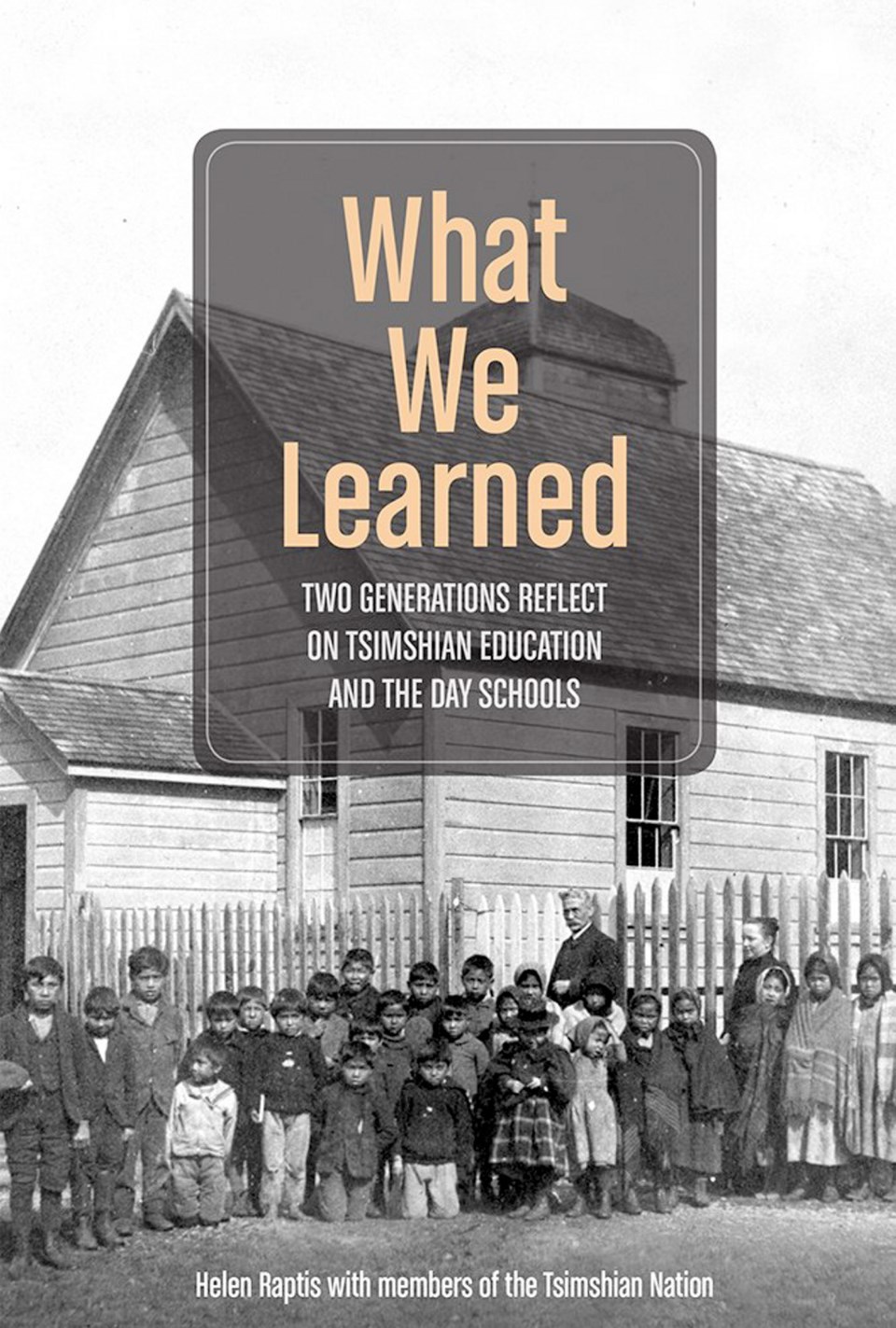What We Learned: Two Generations Reflect on Tsimshian Education and the Day Schools
By Helen Raptis with members of the Tsimshian Nation
UBC Press, 207 pp., $32.95 softcover
The history of residential schools in British Columbia has become well-known in recent years, but those were not the only schools attended by First Nations children.
Many were students in what were known as “Indian day schools,” which were set up in their own communities but separate from the public schools attended by non-native children.
Students in these schools lived with their families within walking distance, and were often able to go home for lunch. Their schools did not fall under the heavy hand of churches, which were using the residential school system to force children to abandon their traditional ways, customs and thinking.
In What We Learned: Two Generations Reflect on Tsimshian Education and the Day Schools, author Helen Raptis — an associate professor in the faculty of education at the University of Victoria — tells the stories of Tsimshian children who attended schools over four decades.
The former students — Mildred Roberts, Wally Miller, Sam Lockerby, Verna Inkster, Clifford Bolton, Harvey Wing, Charlotte Guno, Don Roberts Junior, Steve Roberts, Richard Roberts, Carol Sam and Jim Roberts — tell of education in the day schools, in residential schools, in public schools, and in the cannery town of Port Essington, on the Skeena River near Prince Rupert.
They tell of good times, such as learning skills they used for the rest of their lives, and of bad times, such as being forced to speak English rather than their native tongues.
They also talk of the community as a whole, and how their lives changed when Port Essington was effectively abandoned after two major fires in the 1960s. Families moved to the Terrace area, and education continued there, but it was not the same — not as personal or caring — as it had been in Port Essington.
As a result, the two generations represented here present quite different stories of their experiences in the education system.
The earlier generation experienced more abuse than the later one; the later generation faced more discrimination. The earlier generation has been able to retain more of the Tsimshian culture, language and values.
The Tsimshian Nation members who worked with Raptis weave valuable accounts into a comprehensive, yet highly readable, story of the education system imposed on them, one that was quite different from the traditional Tsimshian thinking about education.
This book helps to fill gaps in official records, which dealt primarily with administrative matters rather than the students.
Raptis includes a summary of all of the teachers who taught at the day school, and it makes for disquieting reading. It was difficult to find and retain qualified teachers, but the most disturbing aspect is that a teacher who admitted to sexual interference with three boys did not face criminal charges for what he had done.
The day school in Port Essington closed in 1947, when the number of students attending the non-native school dropped so low that a merger made sense. The change in the town came four years before the federal government officially ended segregated schooling in 1951.
What We Learned will promote greater understanding of the impact of our education system. Beyond that, though, it’s interesting and highly readable, and fills a huge gap in the written histories of education in British Columbia.
We can learn a lot, in other words, from What We Learned.
The reviewer is the editor-in-chief of the Times Colonist.



